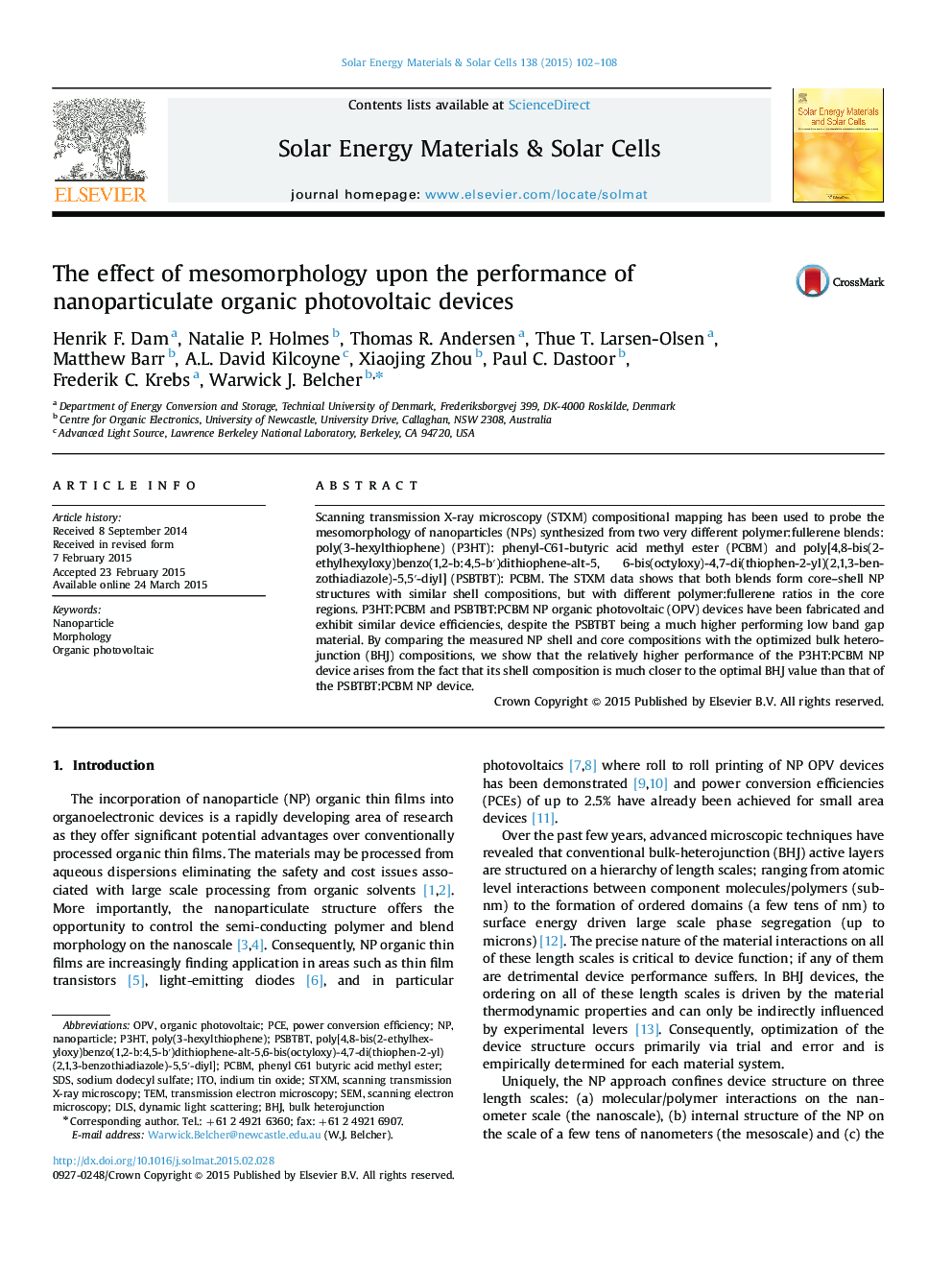| Article ID | Journal | Published Year | Pages | File Type |
|---|---|---|---|---|
| 77787 | Solar Energy Materials and Solar Cells | 2015 | 7 Pages |
•We investigate a nanoparticle (NP) approach for morphological control in OPVs.•The NP approach enables a reduction in the environmental impact of OPV fabrication.•PSBTBT:PCBM and P3HT:PCBM NP mesomorphology is reported.•OPV device performance is compared for NP vs BHJ active layers.•We show that the composition of the NP shell is critical to device performance.
Scanning transmission X-ray microscopy (STXM) compositional mapping has been used to probe the mesomorphology of nanoparticles (NPs) synthesized from two very different polymer:fullerene blends: poly(3-hexylthiophene) (P3HT): phenyl-C61-butyric acid methyl ester (PCBM) and poly[4,8-bis(2-ethylhexyloxy)benzo(1,2-b:4,5-b′)dithiophene-alt-5, 6-bis(octyloxy)-4,7-di(thiophen-2-yl)(2,1,3-benzothiadiazole)-5,5′-diyl] (PSBTBT): PCBM. The STXM data shows that both blends form core–shell NP structures with similar shell compositions, but with different polymer:fullerene ratios in the core regions. P3HT:PCBM and PSBTBT:PCBM NP organic photovoltaic (OPV) devices have been fabricated and exhibit similar device efficiencies, despite the PSBTBT being a much higher performing low band gap material. By comparing the measured NP shell and core compositions with the optimized bulk hetero-junction (BHJ) compositions, we show that the relatively higher performance of the P3HT:PCBM NP device arises from the fact that its shell composition is much closer to the optimal BHJ value than that of the PSBTBT:PCBM NP device.
Graphical abstractFigure optionsDownload full-size imageDownload as PowerPoint slide
